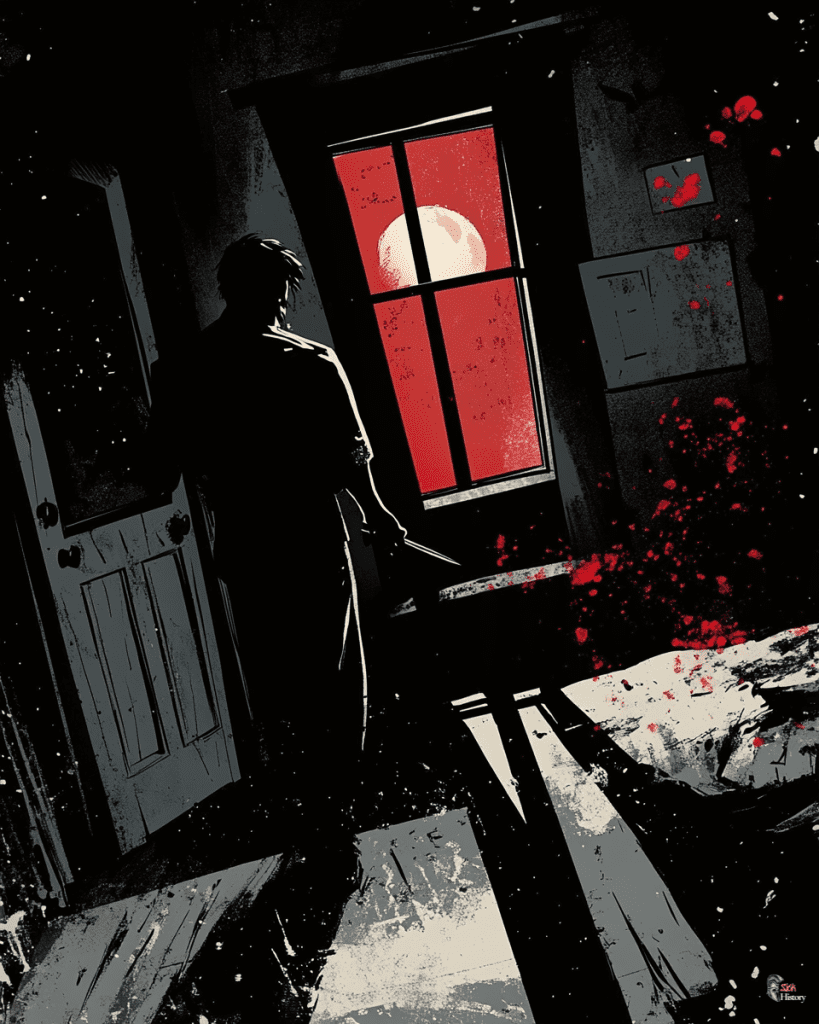In the summer of 1942, the sleepy town of Pascagoula, Mississippi, became the setting for one of the most bizarre and unsettling crimes in American history.
The Phantom Barber of Pascagoula terrorized the community by breaking into buildings and cutting locks of hair from unsuspecting victims as they slept.
This mysterious figure targeted various locations, including the Our Lady of Victories convent, where young girls Mary Evelyn Briggs and Edna Marie Hydel fell victim to his peculiar attacks.
The case captivated the nation, sparking fear and fascination in equal measure.
As the break-ins continued, local authorities scrambled to identify and apprehend the culprit.
The investigation took a dramatic turn when William Dolan, a chemist at a nearby shipyard, was arrested and charged with the crimes.
Despite his protests of innocence, Dolan was found guilty and sentenced to 10 years in prison.
The Phantom Barber case remains shrouded in mystery to this day.
Questions linger about Dolan’s guilt and the true identity of the nocturnal intruder who left nothing but shorn locks and unsettled nerves in his wake.
The story continues to fascinate, offering a glimpse into a wartime America gripped by fear and the enduring allure of unsolved mysteries.
The Phantom Barber of Pascagoula Incident
The summer of 1942 brought an eerie mystery to the sleepy town of Pascagoula, Mississippi. A series of bizarre break-ins left residents baffled and fearful, as an unknown intruder crept into homes and cut the hair of sleeping victims.
Overview of the 1942 Mystery
In early June 1942, Pascagoula found itself gripped by an unusual terror. The Phantom Barber began his peculiar spree at the Our Lady of Victories convent. Two young girls awoke to find locks of their hair mysteriously shorn.
The intruder’s modus operandi was distinct. He would enter through windows, often cutting screens to gain access.
Once inside, he would silently snip the hair of his sleeping victims before vanishing into the night.
As news spread, panic set in. Residents began locking doors and windows, fearful of who might be next.
Profiles of the Victims
The Phantom Barber’s victims were diverse, but all were targeted while asleep. Mary Evelyn Briggs and Edna Marie Hydel, both students at the convent, were among the first.
Six-year-old Carol Peattie became another victim when the Barber entered her family home. She awoke unharmed but missing a lock of hair.
Adults were not spared. Mrs. R.R. Taylor and her daughter both lost hair during a night-time intrusion. Curiously, all victims were left physically unharmed, adding to the mystery.
The Heidelberg Family’s Ordeal
The Heidelberg family experienced a particularly frightening encounter. The Phantom Barber entered their home, targeting multiple family members in one night.
Mrs. Heidelberg awoke to find the intruder in her bedroom. Her screams alerted her husband, but the Barber escaped.
Upon inspection, they discovered hair had been cut from Mrs. Heidelberg and two of their children.
This incident heightened fears in Pascagoula. The Heidelbergs’ experience showed the Barber was growing bolder, willing to risk discovery to satisfy his bizarre compulsion.
Investigation and Aftermath
The Phantom Barber case gripped Pascagoula in 1942, leading to an intensive investigation, a controversial arrest, and lasting questions about the true culprit’s identity. The events that unfolded would leave a lasting mark on the small Mississippi town.
The Arrest and Trial of William Dolan
Investigators initially struggled to identify the Phantom Barber.
The breakthrough came when a bloodhound tracked a scent from a sandy footprint to William Dolan, a chemist at the local shipyard.
Police found locks of hair and a chloroform-soaked cloth in his possession.
Dolan maintained his innocence, but circumstantial evidence mounted against him.
The trial captivated the town, with prosecutors painting Dolan as a disturbed individual obsessed with hair.
Despite the lack of eyewitness testimony, the jury found Dolan guilty. The verdict brought a sense of relief to the terrorized community, though doubts about his guilt lingered.
Governor Fielding Wright’s Involvement
Governor Fielding Wright took a personal interest in the Phantom Barber case. He was drawn to the bizarre nature of the crimes and their impact on Pascagoula.
Wright closely monitored the investigation and trial proceedings.
After Dolan’s conviction, the governor faced pressure from those who questioned the verdict.
In a surprising turn of events, Wright commuted Dolan’s sentence after he had served just a fraction of his prison term. This decision reignited debate about the case and Dolan’s guilt.
Dolan’s Life and Sentencing
William Dolan received a 10-year prison sentence for his alleged crimes as the Phantom Barber. His time behind bars was marked by continued protestations of innocence.
Dolan’s twin brother advocated for his release, maintaining that William had been framed.
This familial support kept the case in the public eye.
After serving less than two years, Dolan walked free thanks to Governor Wright’s intervention.
He left prison a changed man, his life forever altered by the Phantom Barber saga.
Upon release, Dolan attempted to rebuild his life away from Pascagoula.
The true impact of his ordeal on his later years remains a subject of speculation.

